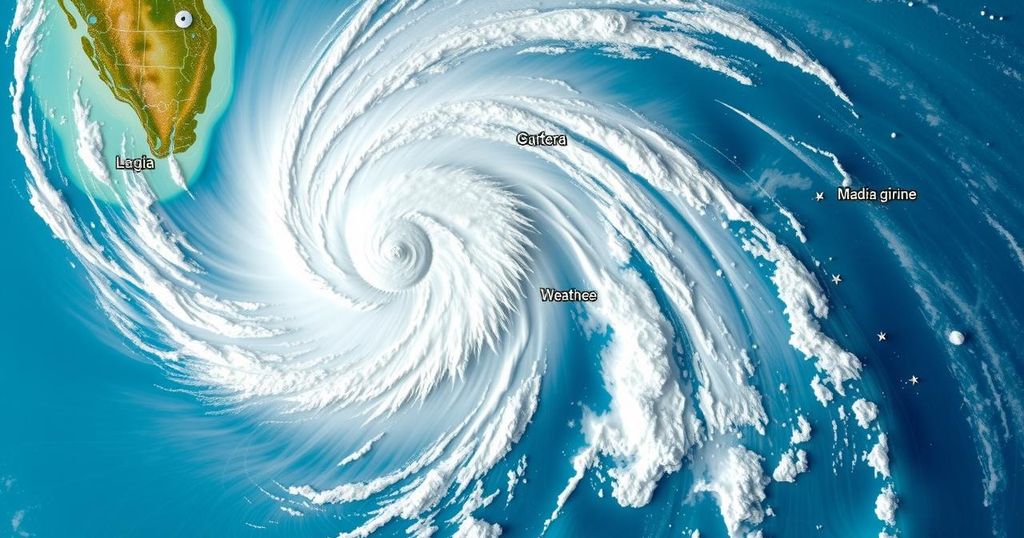Tropical Cyclone Dikeledi: An Overview of Its Formation and Impact
Tropical Cyclone Dikeledi developed in the Indian Ocean with winds of 46 mph. In the Southern Hemisphere, cyclones form differently than hurricanes, rotating clockwise and affecting regions like Madagascar and coastal Australia. The cyclone season runs from late October through May, peaking in February and March.
Tropical Cyclone Dikeledi emerged in the Indian Ocean late Thursday, according to reports from the Joint Typhoon Warning Center. The cyclone has been recorded to have sustained wind speeds reaching up to 46 miles per hour. In the Southern Hemisphere, where only a quarter of the world’s tropical cyclones occur, cyclones are classified differently than hurricanes, as the latter term is used in the Atlantic when wind speeds reach 74 m.p.h. Furthermore, a notable distinction arises in their rotational direction; cyclones rotate clockwise in the Southern Hemisphere, whereas hurricanes rotate counterclockwise.
These weather phenomena pose significant risks to Eastern Africa, particularly Madagascar, alongside affecting coastal regions of western, northern, and eastern Australia, as well as nearby island nations. The cyclone season in this region operates contrary to other parts of the globe, typically commencing in late October and extending through May. Activity peaks generally occur in late February and early March, though specific timings can vary by region.
The formation of tropical cyclones is a key aspect of meteorological studies, especially in areas prone to such phenomena. In the Southern Hemisphere, tropical cyclones are significant due to their relative rarity compared to those in the Northern Hemisphere. Understanding their behavior, including wind patterns and seasonal variations, can enhance preparedness and response strategies for the affected regions. Cyclones are particularly impactful in areas like Madagascar, which faces heightened vulnerability due to its geographical location. The contrasting rotation and naming conventions between cyclones and hurricanes underscore the need for precise communication in meteorological reporting.
In summary, Tropical Cyclone Dikeledi is a significant weather event, forming in the Indian Ocean with wind speeds of 46 miles per hour. The Southern Hemisphere’s unique characteristics in cyclone formation, behavior, and terminology offer essential insights into the risks faced by vulnerable regions like Madagascar. Understanding the timing and impact of cyclones facilitates better preparedness and response efforts for communities at risk.
Original Source: www.nytimes.com




Post Comment